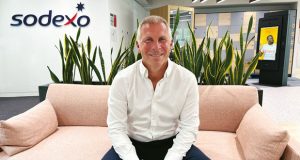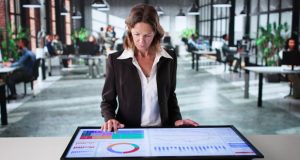SUSTAINABILITY
Supporting sustainability and specifically ESG goals is a key priority for FMs, and though retrofitting, for instance switching to LEDs or installing heat pumps can help address climate change, this is expensive and time intensive.
Yet according to Ramachandran there is another way: “Traditionally, sustainability has been looked at as complex. You need to budget, plan it for a few years, and only do big retrofits which are essential.
“But if you want to have a real impact, in terms of sustainability a lot more value can be derived by what we call a ‘digital retrofit’ which means integrating with the BMS, picking up data and looking at behavioural changes. You can then share that information with stakeholders, for example, occupants, tenants or third-party contractors defining their KPIs. This may sound complex, but in software-driven systems these can be done with minimal investment which can be leveraged to create more energy savings.”
Facilio has been working with retailer Robert Dyas, which wanted to improve their energy efficiency in their circa 100 stores. Although these stores are not fully automated and have no BMS – each store manager was instead given access to an app, which had a system of good behaviour, to remind them to turn down heating and switch off lights at night. By measuring the subsequent monthly metered data, stores were ranked based on how they were consuming energy. As a result, with little or no automation, the software solution has helped them reduce energy waste across their chain of stores.
This focus on understanding consumption patterns and creating behavioural changes, the panel agreed, was a much more effective and people-oriented approach to achieving sustainability. Another low-tech approach at one of the universities was, instead of the heating being activated on the first of October, it wasn’t switched on until the first of November – resulting in a saving of £15,000 a month, and supported by campaigns such as ‘bring your jumper to work day’.
But using digital data to help make subtle changes was also advocated by the group. A services supplier recalled using the data from the sensors measuring storey lighting use detected this was less of a requirement since the adoption of hybrid working patterns. The solution was to reduce the lighting down to run at 80 per cent and see if anybody noticed. Nobody did – so this policy was applied to the rest of the portfolio.
Access to benchmarking data is useful here too, with the panel agreeing that benchmarking against other buildings and even organisations can be a valuable exercise. As one remarked: “Sometimes you can assess your energy level, but you’re not really comparing it to what constitutes good practice. And, if your CAFM provider has a portfolio of buildings, maybe they can help you with some benchmarking.”
Concluding the discussion, we turned to the major roadblocks at the moment in the panel’s energy management strategy.
They stressed it was time sensitive, with organisations being overly concerned about how much time it could take to see the return on investment.
Commented a service supplier: “What we’re trying to do is be proactive, and go to our customers now that we’ve got data and say to them, we can see that your energy usage is too high overnight as we think some of the lighting and heating has been left on manual, which is using loads of energy.”
And, as Ramachandran concluded, in order to make real progress in combining digital solutions with sustainability, you should take a ‘crawl, walk, run’ approach to ensure you make incremental progress.
He said: “In a recent survey of 150 facility managers we conducted (State of Smart Buildings Software 2024), 53 per cent of them said they were overwhelmed with choice overload due to the many point solutions available in the market, and they didn’t know where to start. The key to unlocking progress is to start small. Begin with perhaps a one-year contract, spend less money, try it out, get some quick wins, and then expand into other projects. Rather than coming up with a very big project, ‘land and expand’ is a better route to success.
“It’s not going to happen immediately, but once you have the right platform, you start acquiring data about your buildings, and you can actually carry out continuous improvements.”





